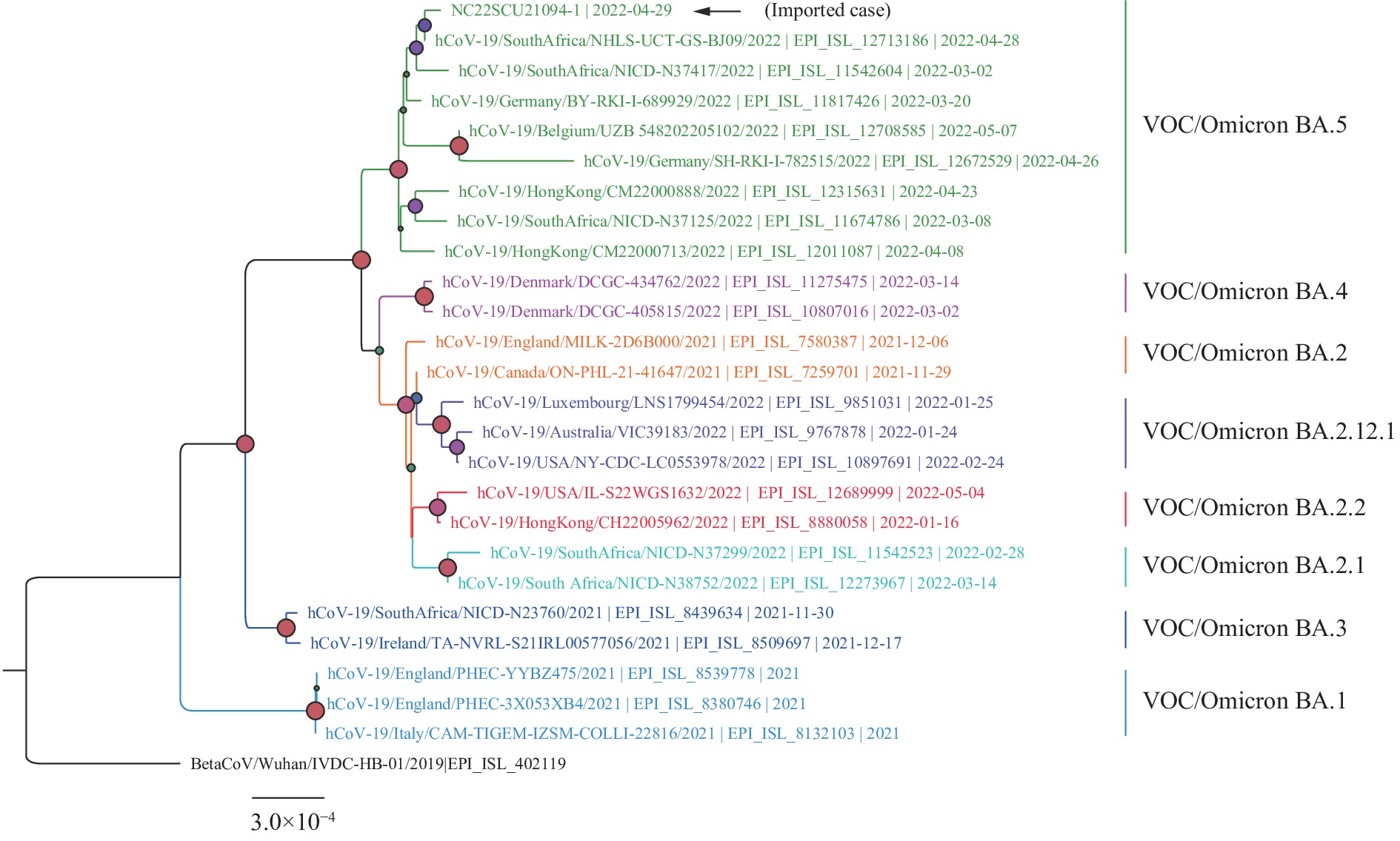-
On April 27, 2022, an international flight KL857 from Amsterdam, the Netherlands arrived at Pudong International Airport, Shanghai Municipality. Passengers were transferred to the quarantine hotel for a routine 14-day medical observation in Songjiang District and regularly tested for severe acute respiratory syndrome coronavirus 2 (SARS-CoV-2). One of the passengers (a 37-year-old Chinese male) was reported positive and diagnosed as a mild case on April 29. The case set out from Uganda (flight KL535) on April 25 and transferred at Amsterdam, the Netherlands on April 26 and Seoul, the Republic of Korea (KL857) on April 27. The patient has been vaccinated in four doses against coronavirus disease 2019 (COVID-19) (Beijing Institute of Biological Products Co., Ltd) in China and Uganda. After diagnosis, he was transferred to Shanghai Public Health Clinical Center for treatment. He recovered after treatment and was discharged on May 12.
A nasopharyngeal swab from the patient was sampled on April 29 and sequenced using MGISEQ-200 (MGI TECH CO., LTD, Wuhan City, Hubei Province, China) on May 13. Genotyping analysis revealed that the patient was infected by SARS-CoV-2 variant of concern (VOC)/Omicron subvariant BA.5. The genome is most closely related to a sequence (GISAID ID: EPI_ISL_12713186) uploaded in South Africa (Figure 1) and 34 nonsynonymous mutations (T19I, A27S, G142D, V213G, G339D, S371F, S373P, S375F, T376A, D405N, R408S, K417N, N440K, L452R, S477N, T478K, E484A, F486V, Q498R, N501Y, Y505H, D614G, H655Y, N679K, P681H, N764K, D796Y, Q954H, N969K, and L24del, P25del, P26del, H69del, V70del) occurred in the spike gene matching the signature of the sublineage BA.5.
 Figure 1.
Figure 1.Phylogenetic tree of multiple lineages of SARS-CoV-2.
Note: The imported VOC/Omicron (BA.5) is highlighted with an arrow. Other Omicron sublineages in different colors are indicated on the right side.
Abbreviation: SARS-CoV-2=severe acute respiratory syndrome coronavirus 2; VOC=variant of concern.
The sequence of BA.5 was first uploaded to GISAID on March 15, 2022 from a patient’s nasopharyngeal and oropharyngeal swab collected on February 25 in South Africa. Together with BA.4, BA.5 has increased in prevalence in South Africa in recent weeks and has already spread to additional 19 countries in 3 months (total of 2,614 sequences submitted to GISAID); BA.5 caused a rise in the number of cases in some countries, such as Portugal, and South Africa has also reported a moderate increase in hospital admissions since late April (1). The L452R, F486V, and 69–70del mutations may impact the characteristics of BA.5 and make it appear to have a growth advantage over BA.1 and BA.2, which may mainly be driven by immune evasion (2-4). The 69–70del mutation is also responsible for S-gene target failure in polymerase chain reaction (PCR) tests, but PCR assays that include multiple gene targets will maintain accuracy for detecting this lineage (5-6). Due to the short duration of the epidemic, studies showed that the extent of vaccination and the high level of BA.2 waves in each country likely influence the emergence of BA.5 (7), but ongoing monitoring and assessment are needed to further elucidate the characteristics and impact of this lineage.
HTML
| Citation: |



 Download:
Download:




